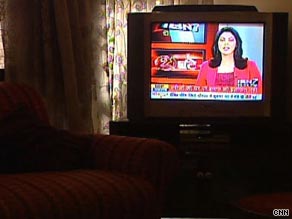
On World Population Day this year India’s new health and welfare minister came out with an idea on how to tackle the population issue: Bring electricity to every Indian village so that people would watch television until late at night and therefore be too tired to make babies.
That statement raised eyebrows across this vast country — but what are the realities and reactions from families who make up the second largest population in the world At 80-plus years old Omar Mohammed has never heard of population control. He lives in India’s most populous state Uttar Pradesh and has certainly done his part in contributing to India’s burgeoning population. “Now you see I have 24 children, 13 boys and 11 girls,” Omar says. Omar believes only God can decide how many children you should have. He lifts his hands to the sky and says: “This is His command. It’s not my doing, it’s His doing.” On the other hand there’s the Arora family in the capital city of Delhi. They have two children. “You can’t even get enough water or electricity now. So its advisable that people have only two children and then they should stop having more kids.” mother Anjana Arora says. The Aroras know a little something about population issues; their daughter was given the official title of India’s one billionth citizen when she was born in 2000. With family planning and free contraceptive programs the Indian government has long tried to encourage families to have only two children. Overall government statistics show the birth rate is coming down. The numbers show 14 of India’s 35 states have reached the two child per family target. But the push is failing in other states, especially in villages and among the poor and illiterate where the fertility rate is as high as 3.5 children per woman.
Don’t Miss
World population projected to reach 7 billion in 2011
There are all kinds of reasons — from the desire to continue having children until a son is born to lack of access to contraceptives. The government’s concern is that a booming population will further test already scarce resources, greatly impact the environment, and make life even harder for the poor. According to the United Nations, India is home to 50 percent of the world’s poor and on current projections, India will become the most populous country on earth sometime in the next 50 years, overtaking China. Upon hearing about the latest idea to use electricity and television to give people something else to do besides procreate, mom Anjana Arora scoffed. “That’s a stupid thing” she said in English then switched to Hindi “The only way to change people’s mentality is through education.” But not everyone is writing the idea off. “It’s an idea that can really work.” says A.R. Nanda. Years ago Nanda helped draft some of India’s population stabilization policies and he now runs the Population Foundation of India. He says while education and access to health care is paramount, electrifying villages is not a bad idea. “It gives a message loud and clear that we need to do something for the people which is people-friendly and which in a way will keep their minds from taking irrational decisions about producing more babies,” Nanda says. He says there are studies that prove it. One such survey done in 2006 by an Italian sexologist reveals couples with televisions in their bedrooms had sex half as much as those without it.
That being said Omar Mohammed, the man with 24 children had a different take. “After watching TV,” he says, “when we look at scintillating things we will probably want to make more children.”